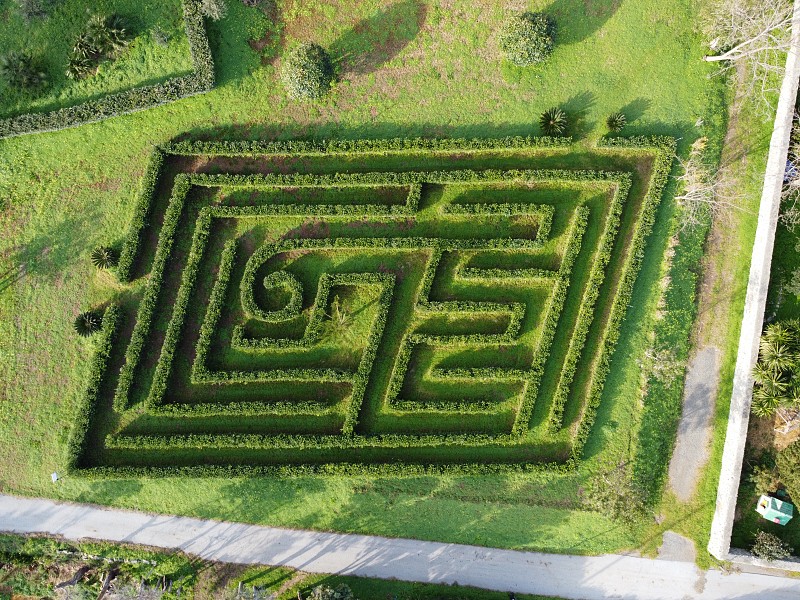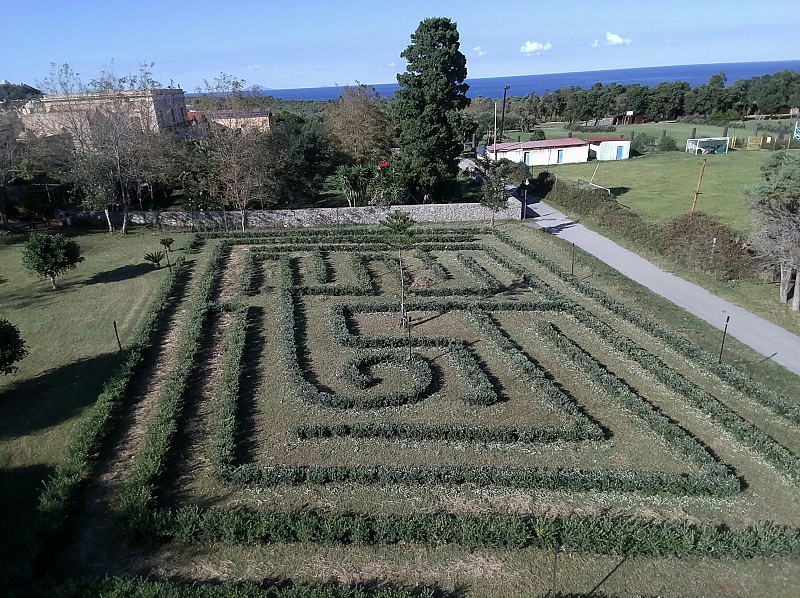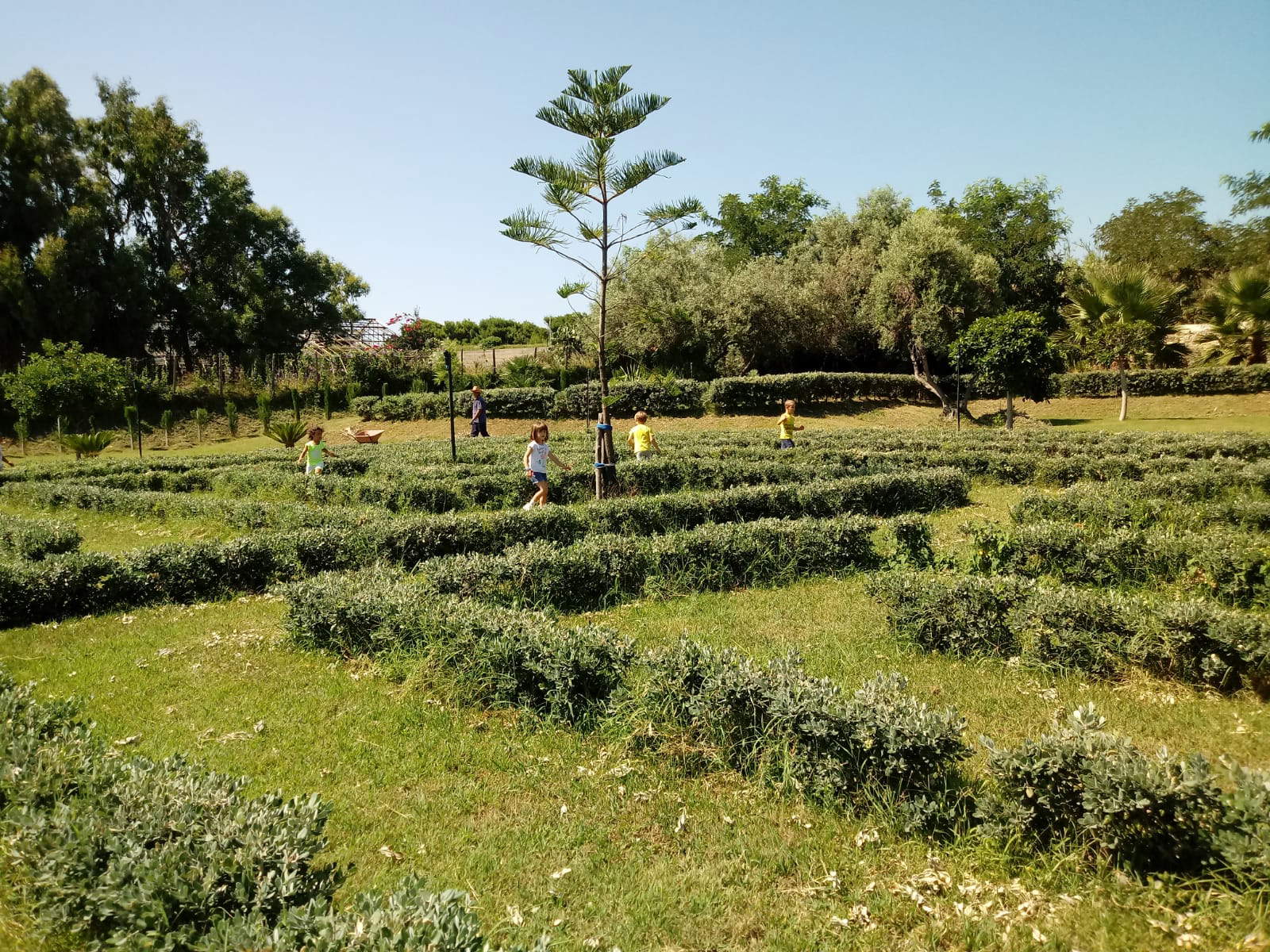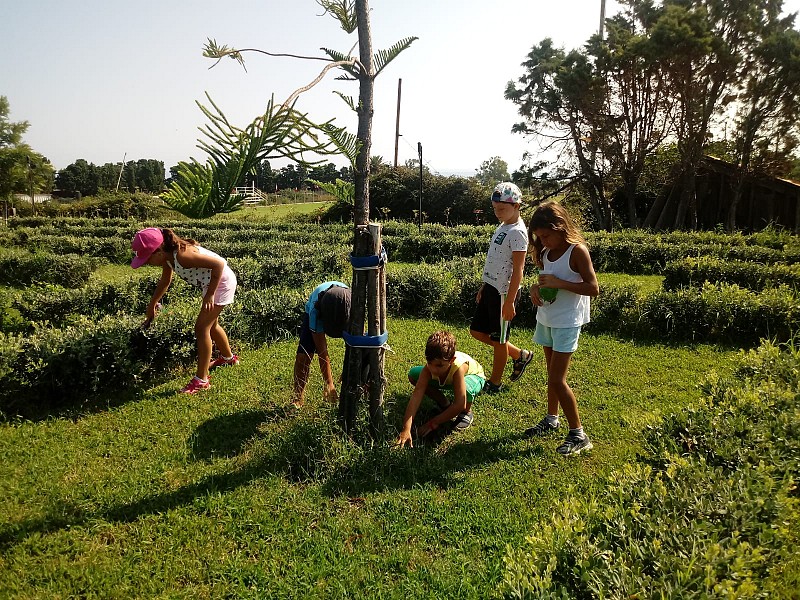It is one of Italy’s newest labyrinths: a maze born in Milazzo, on the coast of Sicily, literally in the middle of the sea, you might say, in one of the most beautiful places on the island. The Gulf of Milazzo is enclosed by a strip of land that, stretching a few kilometers into the Tyrrhenian Sea, divides it from the Gulf of Patti: this strip of land is called Capo Milazzo, on its end in 2019 a protected marine reserve was established, and near the fortified citadel from the Frederician era, also in 2019 a lush nature theme park, called Gigliopoli, was opened here. The credit goes to the Barone Lucifero Foundation and theAssociazione il Giglio, which, thanks to European funds, worked to inaugurate a large green area with thematic gardens and nature trails, with the aim of letting everyone discover the wonder of the landscape of this area of Sicily, familiarize people with the plants of the area, and convey to children the importance of respect for nature.
In the park you can find a farm where you can get to know the animals (horses, sheep, goats, ducks, chickens) and take the children for educational activities, the Palm Garden that includes several specimens of palm trees over 100 years old planted here in the 19th century by Baron Giuseppe Lucifero di San Nicolò, the Garden of Olive Trees where likewise there are centuries-old olive trees and plants typical of the Mediterranean maquis, and then again the Garden of the Righteous with thirteen fruit trees dedicated to as many victims of the Mafia, the Garden of the Responsible that instead pays tribute to those who daily contribute to the fight against organized crime organized crime, the Cactus Garden named after the majestic cactus at its center, theNatural Garden with production intended for exchange and self-consumption, and the Garden of Strelizias with plants of the same name found all along its eastern border. And then there is the Enchanted Garden, where the labyrinth is located: by Gigliopoli’s own admission, it is the one most loved by the little ones, who enjoy spending afternoons and chasing each other through the maze’s corridors.

 The labyrinth of
The labyrinth of The labyrinth of
The labyrinth of The labyrinth of
The labyrinth of The Labyrinth of
The Labyrinth ofInitially called the “Mediterranean Garden of the Senses,” this labyrinth was created as a result of the redevelopment of a previous garden, some 2,300 square meters in size, where there were previously several specimens of Canary Island palm trees that were later attacked by the red boll weevil, the deadly beetle that digs tunnels inside the trunks of these trees. Initially, the garden was to house some typical plants of the area, especially succulents, to create an additional thematic garden: the idea was to form an educational trail to lead young visitors to discover the growth stages of the plants here. A butterfly observation point was also to be created later. However, due to bureaucratic problems that made it necessary to modify the project, the labyrinth was created, which has a parallelogram structure and a feature that makes it unique in Italy (it is found only in Leonardo’s Labyrinth in Vinci): as Ettore Selli explains in his volume Italian Labyrinths, it is thehedge island, “however, not in its canonical form.” It is, in fact, rendered through a “simple architectural stratagem that consists of a pattern disconnected in its parts so that some of them are isolated from the rest of the structure.”
The essence with which the walls of the labyrinth, which do not exceed the height of those who enter, were created is quite unusual: they are in fact made from metrosideros, a plant native to Oceania, with fleshy leaves and which in spring exhibits splendid blooms of bright colors. And the design of the Enchanted Garden of Gigliopoli is also very unique, unusual: in fact, the walls mostly follow a straight line pattern but, toward the center, one of the walls describes a spiral, a sort of curl (this element, Selli writes again, “taking inspiration from the famous golden spiral, breaks the geometric lines giving an artistic flicker to the whole that gravitates around the specimen of araucaria wanted here to symbolize the Tree of Life.” thearaucaria, a very young specimen, is located right in the center of the maze and represents the final destination of the journey), and furthermore in the lower section of the labyrinth the walls themselves follow a tortuous zig-zag pattern, while in the upper section the corridors appear longer. Different paths can be taken to get to the center. “The labyrinth,” explains Vincenzo Scaffidi, president of the Associazione il Giglio, “is like a metaphor for life: you go in, walk your path and you will surely come out better, because there is always a way out.”
 |
| The Enchanted Garden of Gigliopoli, a labyrinth on the sea of Sicily |
Warning: the translation into English of the original Italian article was created using automatic tools. We undertake to review all articles, but we do not guarantee the total absence of inaccuracies in the translation due to the program. You can find the original by clicking on the ITA button. If you find any mistake,please contact us.